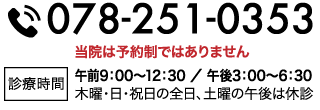Rosacea (Kobe Dermatology)
酒さ
当院にはブログをみて、酒さの方が多く来院されています。神戸は海外の方が多いのも特徴と実感しております。海外の方に罹患が多い「酒さ」「Rosacea」ですので、当院の酒さの治療外用剤を英語でも表記をさせていただきます。日本語の理解が困難な方にも英語で理解いただければと思います。
If Japanese is difficult, we will support English as much as possible.
Rosacea is a chronic and frequently relapsing inflammatory skin disease primarily affecting the central areas of the face. The differential diagnosis is wide, and the treatment is sometimes difficult and varies by stage of rosacea.
subtype I: erythematotelangiectatic rosacea subtype II: papulopustular rosacea subtype III: phymatous rosacea subtype IV: ocular rosacea
①Topical metronidazole
Topical metronidazole has shown to reduced erythema of rosacea. A treatment with topical metronidazole 0,75-1% cream or gel may be attempted in patients with subtype I. Metronidazole (MTZ) is a nitroimidazole antibiotic. For subtype II rosacea, 0.75–1% cream or gel are most used and should be applied twice daily. Compared to azelaic acid (AZA), similar or even superior results of azelaic acid in reducing facial erythema have been observed. The strongest reduction in lesion count is clinically observed around 6 weeks.
②Topical azelaic acid
The application of topical azelaic acid 15% cream or gel can be attempted in patients with subtype I. Multiple, mostly randomized, double-blind, multicentre studies have provided good data on the beneficial effects of azelaic acid on subtype II rosacea. Erythema as well as inflammatory lesions responded.
③Topical ivermectin
Ivermectin is a broad-spectrum antiparasitic agent. Some trial ivermectin 1% cream showed superiority over metronidazole 0.75% cream.
It must be considered that the use of most drugs is off label in Japan.

